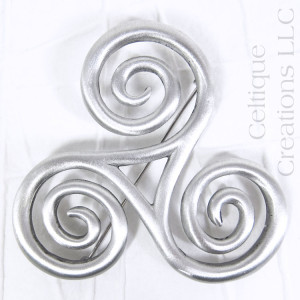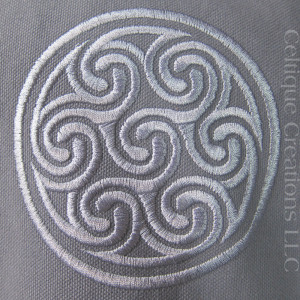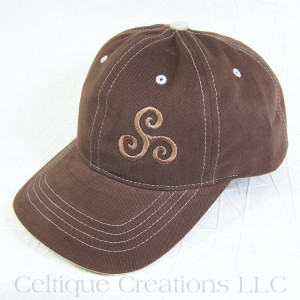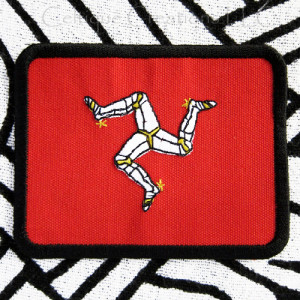-
DateFebruary 1, 2018
-
Categories
 So what in the heck do I call this spiraling design? This design goes by three names; triskele, triskelion and triple spiral. The first and third are most common. Triskelion is translated from the Greek for three legged. Does that bring up an image of a Celtic nation’s flag? It should. The Isle of Man uses a literal triskelion for their flag.
So what in the heck do I call this spiraling design? This design goes by three names; triskele, triskelion and triple spiral. The first and third are most common. Triskelion is translated from the Greek for three legged. Does that bring up an image of a Celtic nation’s flag? It should. The Isle of Man uses a literal triskelion for their flag.
The triskele can be found around the world and has been around since ancient times. The most well known to the Celtic world is carved on a rock outside the megalithic monument of Newgrange in County Meath, Ireland. The monument has been dated to approximately 3200 B.C.
If you twist three triskeles together you will find the rock carvings found on a grave slab at Carrowntemple in County Sligo, Ireland. It is believed to be from the 7th or 8th century due to similar designs found in the Book of Darrow that can be dated to 650 AD. The triskele is present in various forms in many of the illuminated manuscripts that were created in the dark ages at monasteries within Celtic nations.
 Now I’m sure you’re wondering what this strange symbol means. Honestly, no one knows for sure. There are many different things that can be attributed to this confusing and beautiful design. None of which is more right or wrong than the last. Celtic art historian and author Aidan Meehan suggests that the carving in Newgrange could be a puzzle that leads the follower on a journey or change within themselves or in their life. Others have said that a triskele is another form of the trinity, either the Christian or mother goddesses. I’ve even heard it called a symbol for water as it can appear as waves.
Now I’m sure you’re wondering what this strange symbol means. Honestly, no one knows for sure. There are many different things that can be attributed to this confusing and beautiful design. None of which is more right or wrong than the last. Celtic art historian and author Aidan Meehan suggests that the carving in Newgrange could be a puzzle that leads the follower on a journey or change within themselves or in their life. Others have said that a triskele is another form of the trinity, either the Christian or mother goddesses. I’ve even heard it called a symbol for water as it can appear as waves.
Does the way the design is facing change the meaning? To some it does. Depending on which way the  triskele is turning, it could mean either victory/unity, or hostility. This brings us back to the Isle of Man with their three legged flag. The story goes that the legs are rotating counterclockwise so they never have to kneel to the British. This fits in nicely with the Island’s motto: “‘Quocunque jeceris stabit.” To translate from the Latin, “wherever you throw, it will stand.”
triskele is turning, it could mean either victory/unity, or hostility. This brings us back to the Isle of Man with their three legged flag. The story goes that the legs are rotating counterclockwise so they never have to kneel to the British. This fits in nicely with the Island’s motto: “‘Quocunque jeceris stabit.” To translate from the Latin, “wherever you throw, it will stand.”
No matter which meaning you want to attribute to this unique design, it is steeped in the Celtic identity.
If you would like to see the various ways we use this ancient design, please click the button below.